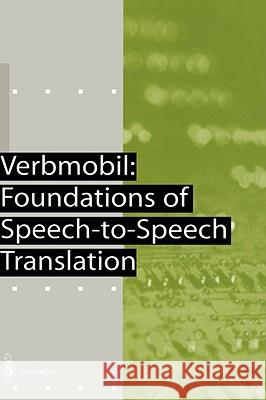Verbmobil: Foundations of Speech-To-Speech Translation » książka
Verbmobil: Foundations of Speech-To-Speech Translation
ISBN-13: 9783540677833 / Angielski / Twarda / 2000 / 677 str.
In 1992 it seemed very difficult to answer the question whether it would be possible to develop a portable system for the automatic recognition and translation of spon taneous speech. Previous research work on speech processing had focused on read speech only and international projects aimed at automated text translation had just been terminated without achieving their objectives. Within this context, the German Federal Ministry of Education and Research (BMBF) made a careful analysis of all national and international research projects conducted in the field of speech and language technology before deciding to launch an eight-year basic-research lead project in which research groups were to cooperate in an interdisciplinary and international effort covering the disciplines of computer science, computational linguistics, translation science, signal processing, communi cation science and artificial intelligence. At some point, the project comprised up to 135 work packages with up to 33 research groups working on these packages. The project was controlled by means of a network plan. Every two years the project sit uation was assessed and the project goals were updated. An international scientific advisory board provided advice for BMBF. A new scientific approach was chosen for this project: coping with the com plexity of spontaneous speech with all its pertinent phenomena such as ambiguities, self-corrections, hesitations and disfluencies took precedence over the intended lex icon size. Another important aspect was that prosodic information was exploited at all processing stages."











